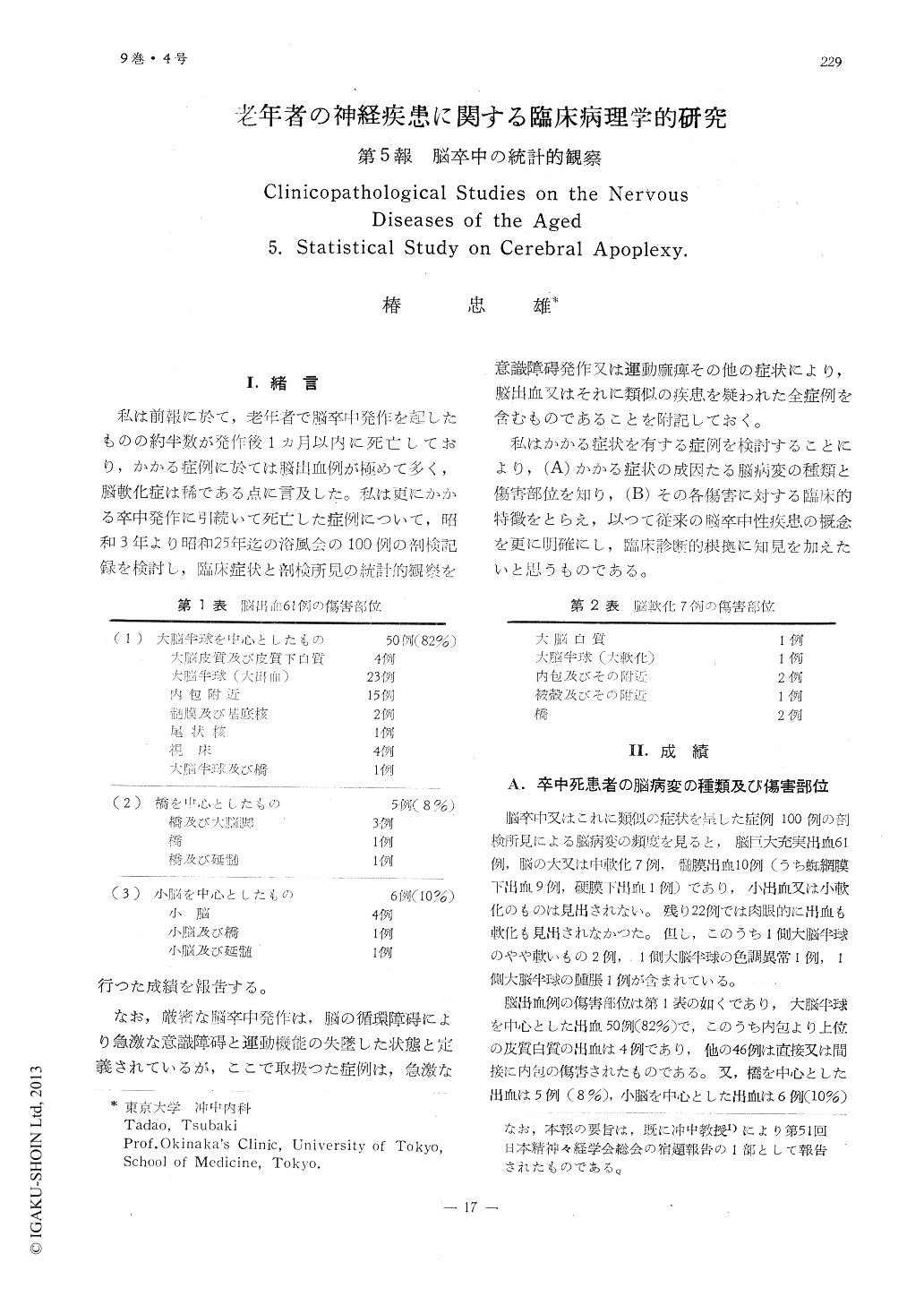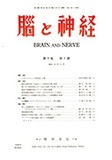Japanese
English
- 有料閲覧
- Abstract 文献概要
- 1ページ目 Look Inside
I.緒言
私は前報に於て,老年者で脳卒中発作を起したものの約半数が発作後1ヵ月以内に死亡しており,かかる症例に於ては脳出血例が極めて多く,脳軟化症は稀である点に言及しな。私は更にかかる卒発作に引続いて死亡した症例について,昭和3年より昭和25年迄の浴風会の100例の剖検記録を検討し,臨床症状と剖検所見の統計的観察を行つた成績を報告する。
なお,厳密な脳卒中発作は,脳の循環障碍により急激な意識障碍と運動機能の失墜した状態と定義されているが,ここで取扱つた症例は,急激な意識障碍発作又は運動麻痺その他の症状により,脳出血又はそれに類似の疾患を疑われた全症例を含むものであることを附記しておく。
A clinical pathological study was made on100 cases of the aged which died within one month following the apoplectic stroke.
1. Concerning the brain pathology, there were 10 cases of meningeal hemorrhages, 61 of cerebral hemorrhages, and 7 of cerebral so-ftenings. In 22 cases, there were no hemorr-hage or softening in the brain, though they had stroke clinically.
2. As to the localization of the cerebral he-morrhage, 50 cases showed main hemorrhages in the cerebral hemisphere, 5 cases in the pon-tine area and 6 in the cerebellum.
3. Death rates within 24 hours after the stro-ke were the largest in the cases of meningeal hemorrhages (50% of them), followed by those of ventricular hemorrhages (46%), those wi-thout hemorrhage nor softening (33%) and tho-se of cerebral hemorrhages without ventricular rupture (24%). No case of cerebral softening died within that period. Those which had he-morrhages in the lower portion of the brain stem had short period of survival time.

Copyright © 1957, Igaku-Shoin Ltd. All rights reserved.


